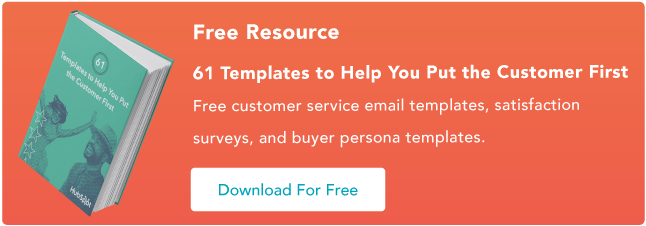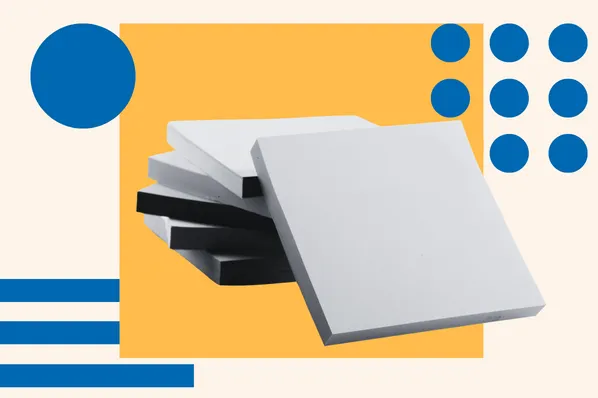There's nothing less satisfying than having to face the dreaded aftermath of that deal when a customer suddenly has second thoughts and decides that the purchase was a mistake. All of a sudden, the relationship you cultivated for months starts crumbling. You were so sure that the customer was convinced that that specific purchase was going to benefit their personal or professional life. Yet, somehow, that sentiment has taken a 180-degree turn.
Yep. Your customer is dealing with buyer's remorse.
What Is Buyer's Remorse?
Buyer's remorse is the feeling of regret in response to making a -- usually, expensive -- purchase. This regret can often be coupled with fear or stress, leading a buyer to want to immediately return the purchase.
Naturally, as a customer service employee who's desperately trying to keep their company -- and job -- afloat, buyer's remorse should be your biggest nightmare. However, it's not just about the monetary value of a customer. You care about your customers and want them to get a great experience out of their new purchases. And, you care about your company and believe in its products and services, so you want the world to believe in them, too.
It makes sense to you that these purchases will give you a lot of bang for your buck. Now, you just have to make that clear to your customers. After all, buyer's remorse typically starts kicking in a few days post-purchase. So, limit the opportunities for buyer's remorse to creep up on your customers by following the steps below.
6 Steps to Prevent Buyer's Remorse
1. Provide value, well in advance.
Buyers want to know that you care about more than merely using them as a means to an end. Make sure you have cultivated a solid foundation for your relationship that goes beyond that singular purchase. That is how you can secure a loyal customer with a higher customer lifetime value.
A customer relationship will blossom when the customer trusts that you have their best interests at heart. That means building a relationship based on agreed-upon benefits which have been included in your proposals and/or contract. Give them your word, and keep it. That will make it less likely that they have regrets post-purchase.
2. Set expectations.
Immediately after their purchase has been made=, explain to the customer -- verbally and in writing -- what they can expect to receive from you and your company. Provide a document listing how their account will be handled, how invoicing will work, and whatever the next steps are in the process. Then abide by it.
The important thing is to not give the customer false hopes. Don't tell them the product will solve all their problems if it won't. Instead, focus on the ways in which the product can and will improve their lives. If the customer leaves the purchase feeling assured of the ways in which the product will benefit them, there's a much lower chance that they'll feel disappointed.
3. Send a thank you note.
You've likely already expressed your thanks over the phone or in person. However, that's not enough. What makes a lasting impression a customer is a written thank you letter. So, as soon as you can, send them one.
In the note, express how much you appreciate their decision to trust you and your company with this purchase. That note should be handwritten, not typed and emailed. Mailing a tangible thank you note makes a difference because not many people -- especially companies -- do that anymore. It'll be a welcome surprise and make the customer feel reassured in their purchase.
4. Provide contact information within 24 hours.
Most customers will expect that, as soon as they hand over their credit card info and receive the order submission email, the company will stop caring about them. After all, you've gotten what you wanted, right? Wrong.
Ensure your customers that you're still there for them by offering them the best onboarding practices you have up your sleeve. Offer them a list of all the relevant people who will be working on their account in a welcome email. Provide direct phone numbers, email addresses, cell numbers, any appropriate blogs, and social media information. Guarantee someone will always get back to them in a specific amount of time if they have any issues and that someone will be working closely with them to help them master the product. They'll never feel like they're on their own, and, once they learn how to use their product, it'll be less likely that they decide to give it up.
5. Introduce user groups.
If your company maintains user groups, introduce the customer to key individuals in the groups. They'll love interacting with other consumers, like themselves, who are using the same or similar products. User groups form a camaraderie that is unbeatable. Customers can learn tips and tricks from each other. And, hearing from other customers who have had great experiences with your company and products will encourage your new customer that the purchase was the correct move.
If your company maintains user groups, introduce the customer to key individuals in the groups. They'll love interacting with other consumers, like themselves, who are using the same or similar products. User groups form a camaraderie that is unbeatable. Customers can learn tips and tricks from each other. And, hearing from other customers who have had great experiences with your company and products will encourage your new customer that the purchase was the correct move.
6. Share the love.
At this point, you're probably pretty attached to this customer. You've coaxed them through their worries, learned all the reasonings behind their purchase, and cheered them on as they got acquainted with their new product. However, what's most efficient and effective for your company is for you to pass that information onto your team.
Create a master customer profile complete with all pertinent information -- phone numbers, emails, contracts, billing information, etc. -- and make sure it's easily accessible by everyone in your company who will be working on the account. Answer any questions and make sure your colleagues know what you know about the new customer's objectives and expectations. This will ensure that the customer has a well-rounded and consistent experience with every individual they interact with.
Buyer's remorse is a very close relative to customer attrition. So even if your customer doesn't immediately experience remorse, it's a good idea to keep these tips in mind. You never know when the regrets will creep up, so be sure to pay close attention to the signs and address them as soon as possible.
Next, read this post on the definition of customer churn.
Customer Retention
.png?width=112&height=112&name=Image%20Hackathon%20%E2%80%93%20Vertical%20(30).png)


-2.png)
![7 Customer Acquisition Challenges You Might Face This Year [New Data]](https://53.fs1.hubspotusercontent-na1.net/hubfs/53/customer%20acquisition%20%20(1).webp)




![7 Secrets for Getting Repeat Customers That Stick Around [Consumer Data]](https://53.fs1.hubspotusercontent-na1.net/hubfs/53/repeat-customers.jpg)


